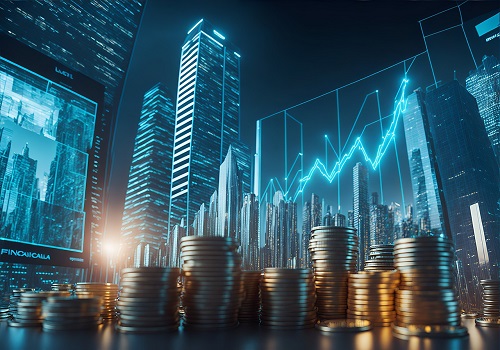The Rise of Streetwear: How Urban Culture Became High Fashion

Streetwear has evolved from humble beginnings into one of the most influential forces in the global fashion industry. What started as a subculture among skaters, surfers, and hip-hop communities in the 1980s has transformed into a mainstream fashion movement that blends comfort, luxury, and urban aesthetics. This article explores the origins of streetwear, its cultural significance, and how it’s shaping the future of fashion.
Origins of Streetwear: The Blend of Subcultures
Streetwear’s roots can be traced back to the streets of New York, Los Angeles, and Tokyo, where young people started expressing their individuality through fashion. Influenced by skateboarding, hip-hop, and punk culture, early streetwear brands like Stüssy, Supreme, and A Bathing Ape (BAPE) offered clothing that reflected rebellious attitudes, creativity, and a connection to subcultures. These brands were more than just clothing labels—they were symbols of a lifestyle, a statement against mainstream fashion, and an expression of youth culture.
The Intersection of Luxury and Streetwear
In the early 2000s, streetwear began to make its way into high fashion, a fusion that has now become a dominant trend. Brands like Louis Vuitton, Balenciaga, and Gucci started embracing the streetwear aesthetic, collaborating with streetwear brands and incorporating casual, oversized, and logo-heavy designs into their collections. The partnership between luxury fashion houses and streetwear labels is a prime example of how fashion is constantly evolving and adapting to cultural shifts.
One of the most iconic collaborations was between Louis Vuitton and Supreme in 2017. The collaboration broke barriers, bridging the gap between high fashion and streetwear in a way that had never been done before. It was a moment that signaled streetwear’s move from the streets to the runway, and its growing influence in the fashion world.
The Power of Sneakers: Footwear as the New Status Symbol
Sneakers have become one of the most recognizable elements of streetwear culture. What started as functional footwear for athletes has turned into a global phenomenon, with limited-edition releases, collaborations, and resale markets. Brands like Nike, Adidas, and Off-White have redefined the sneaker game, creating coveted styles that are as much about status and exclusivity as they are about function.
The sneaker culture has been fueled by collaborations with streetwear icons and celebrities. For example, Kanye West’s partnership with Adidas for his Yeezy line has transformed sneakers into a must-have fashion item, not just for their comfort but also for their cultural cachet. Sneakerheads, a subculture dedicated to collecting rare and limited sneakers, have turned footwear into a multi-billion-dollar industry that continues to thrive.
Streetwear and the Digital Age
Social media platforms, particularly Instagram and TikTok, have played a pivotal role in spreading streetwear culture worldwide. Influencers, musicians, athletes, and fashion enthusiasts share their outfits, creating global streetwear communities and allowing brands to directly connect with their audiences. Streetwear is now more than just an aesthetic; it’s a culture that’s powered by online interaction and fueled by the desire for authenticity and exclusivity.
Brands like Supreme have leveraged social media to build a cult following, with their “drop” model creating anticipation and excitement for new releases. The limited availability of streetwear items has given rise to a thriving resale market, where collectors can sell rare items for exorbitant prices.
Streetwear's Influence on Mainstream Fashion
Today, streetwear is seen everywhere, from high-end runways to everyday street style. The once rebellious style is now mainstream, with brands like Off-White, Fear of God, and Palm Angels offering luxury streetwear lines. Even fast fashion brands like Zara and H&M have adopted elements of streetwear, creating affordable versions of high-end street styles.
The trend has also found its way into traditional office wear, with casual Fridays and athleisure gaining traction in corporate settings. The blending of casual and formal attire is a reflection of the growing importance of comfort in fashion, and streetwear has been at the forefront of this shift.
The Future of Streetwear: Where It’s Heading
The future of streetwear seems limitless. As streetwear continues to influence fashion, it will likely continue to blur the lines between luxury and casual, pushing the boundaries of what’s considered acceptable in fashion. The rise of virtual fashion and digital clothing could also play a role in the future of streetwear, allowing for new forms of self-expression in the digital realm.
Moreover, the inclusivity of streetwear is likely to increase, with brands continuing to cater to diverse body types, genders, and cultures. As fashion moves towards sustainability, streetwear will also need to evolve by embracing eco-friendly materials and ethical production practices.
Conclusion: Streetwear as a Global Cultural Movement
Streetwear has undoubtedly transformed from a niche subculture to a global fashion movement. Its influence on luxury fashion, sneakers, and pop culture continues to shape the industry. With its ability to blend urban style with high-end design, streetwear has secured its place in the fashion world and shows no signs of slowing down. Whether you’re wearing a Supreme hoodie or a high-end designer collaboration, streetwear is a testament to the power of youth culture, individuality, and the democratization of fashion.








.jpg)











